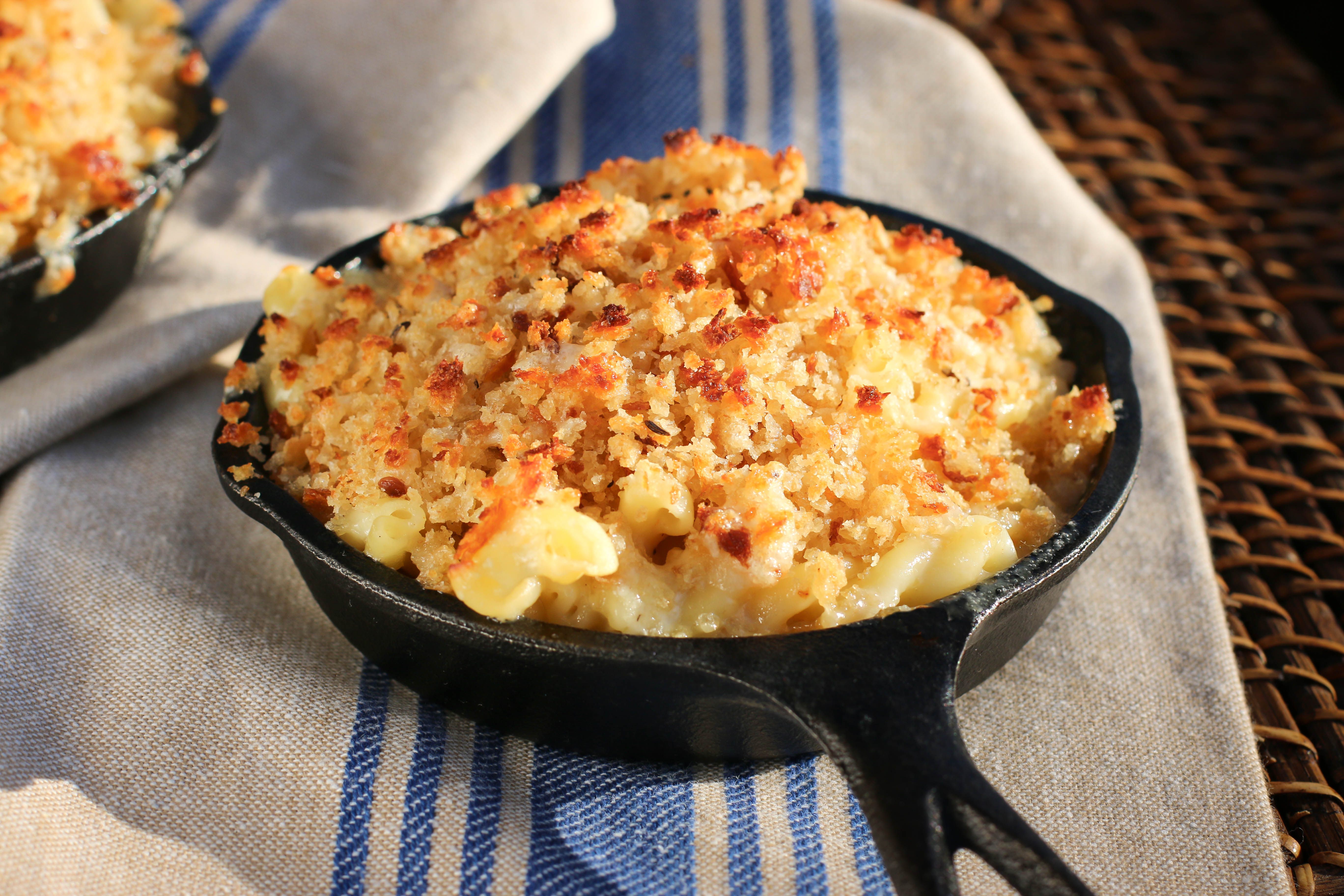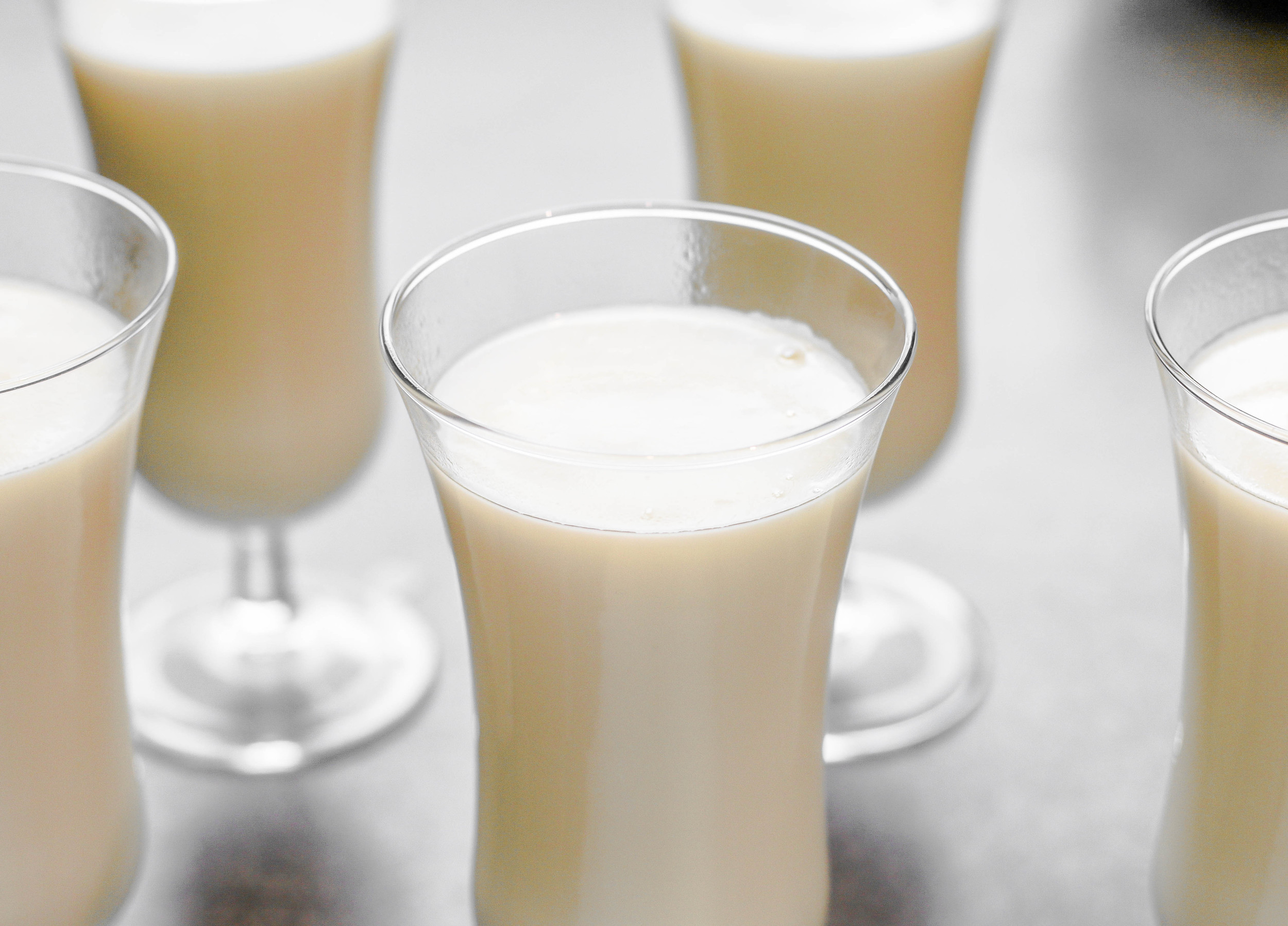Black Rice Pudding with Coconut & Lemongrass

Black Rice Pudding with Coconut & Lemongrass grew out of our friend Marcia's request for a creative way to highlight the unique flavor and earthy purple hue of black forbidden rice. During my time in Cambodia as a college student, I lived with an outstanding cook who taught me to coax flavor from a limited set of ingredients, often only herbs and rice. This dessert marries the nutty sweetness of black forbidden rice with lemongrass's distinctive bright and herby citrus flavor. Using only coconut milk and egg yolks in the subtly sweet sauce allows the dish to be gluten free and dairy free, two special requests of our friend Marcia. In this case, keeping dairy and thickeners out of the picture allows for a purer flavor and lighter texture. We used fresh mango and toasted coconut as a garnish to contrast with the creamy purple pudding.
While the steps to this dish are a bit longer than your average recipe, it is well worth the effort. The complexity arises from coaxing out the best flavors from delicate ingredients and creating a silky smooth dairy free custard.The result is both delicious and visually stunning.
Yield: 8 generous portions
Ingredients:
Black Rice:
- 3 cups black forbidden rice
- 3 1/2 cups water
- 1/2 teaspoon kosher salt
Coconut-Lemongrass Sauce:
- 3 cans (13.5 oz) coconut milk
- 3 large stalks fresh lemongrass, finely chopped (about 1 cup chopped)
- 3/4 cup sugar
- 6 egg yolks
- 3 mangos, diced (optional)
- 1/2 cup unsweetened coconut flakes, toasted (optional)
Steps:
- In a medium saucepan, combine rice, water, and salt. Turn heat to high and bring to a boil. When the rice has reached a boil, turn to low, cover, and set a timer for 30 minutes. After 30 minutes, turn off the heat and uncover. Set aside while you prepare the sauce (or prepare the sauce while the rice is cooking). The rice should have soaked up all the liquid and be perfectly cooked (pleasantly chewy, without being either mushy or crunchy).
- In a large saucepan combine coconut milk, chopped lemongrass, and sugar. The lemongrass is chopped so it can quickly release its flavorful essential oils. In order to keep the lemongrass flavor bright, you can only steep for a limited amount of time. So the finer you chop the lemongrass, the better the extraction will be.
- Bring the coconut-lemon grass liquid to a simmer over medium heat. Just before it begins to boil, turn the heat to low and allow to steep at a very low simmer for 5 minutes uncovered. Turn off the heat and allow to continue steeping for an additional 3 minutes.
- Place a fine mesh strainer over a large clean bowl. When the lemongrass has finished steeping, pour the mixture through the strainer to catch the bits of lemongrass. You can discard the lemongrass pieces. Lemongrass is delicious, but its texture is very course and stringy. You definitely want to strain it all out before continuing.
- Wipe out your saucepan to remove any stray strings of lemongrass, and add back the strained coconut-lemongrass liquid. Over medium heat bring the mixture back up to a near boil (in should be steaming, with an occasional bubble). Turn the mixture to low.
- In a small bowl, whisk the egg yolks until they come together in a uniform yellow liquid.
- In this next step you will be tempering the eggs. What this means is gently bringing the egg yolks up to temperature while whisking to avoid curdling (i.e. scrambled eggs). You do this by adding about 1/3 cup of hot coconut-lemongrass liquid to the yolks while whisking the yolks vigorously. Once the liquid is fully incorporated, repeat with another 1/3 cup. Do this 3-5 times. At this point your eggs will be very close to the temperature of the main sauce liquid. Turn the heat off on your barely simmering coconut-lemongrass liquid and, while whisking vigorously, dump in the egg yolk mixture. Whisk for 1 minute as the mixture thickens slightly.
- Combine the cooked rice and coconut-lemongrass sauce in a large bowl. Stir to combine. Notice that the color in the rice will quickly start turning the sauce an earthy pale purple. Cover with a piece of plastic wrap and allow to cool at room temperature for 2-3 hours, stirring occasionally. The rice will soak up much of the liquid, and the sauce will thicken and deepen in color as it cools. The dish is best served at room temperature just after the cooling period. If you must store in the refrigerator overnight (or up to two days), allow it to come up to room temperature before serving. Cold cooked rice undergoes a complex molecular process called retrogradation, which will make the grains hard and gritty...not what you are looking for in a creamy rice pudding. Allowing the rice to come up to room temperature after storing in the refrigerator can somewhat mitigate this effect (although not completely eliminate it).
- Serve the pudding simply, or with toasted coconut and diced mango on top as we did. We used 3 medium ripe mangos. For the coconut, toast 1/4 cup unsweetened coconut flakes in a 450 degree oven for 5 minutes until just turning light brown at the edges.
*A note about serving. You can decide how much sauce to serve with the rice by using a slotted spoon to first plate the rice, then spooning over as much sauce as desired. Our pictures show minimal saucing.








